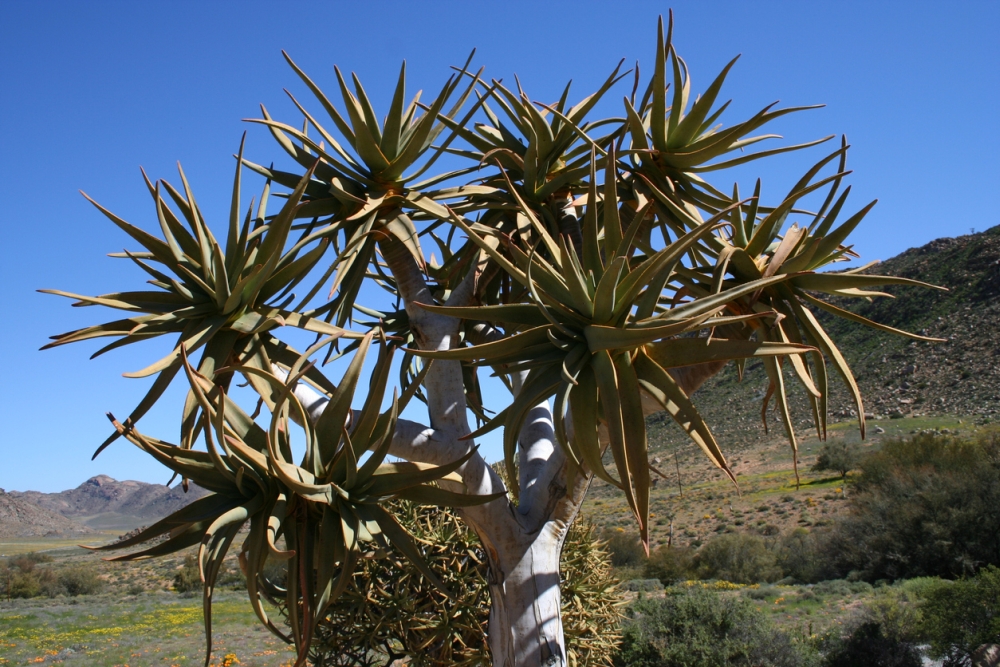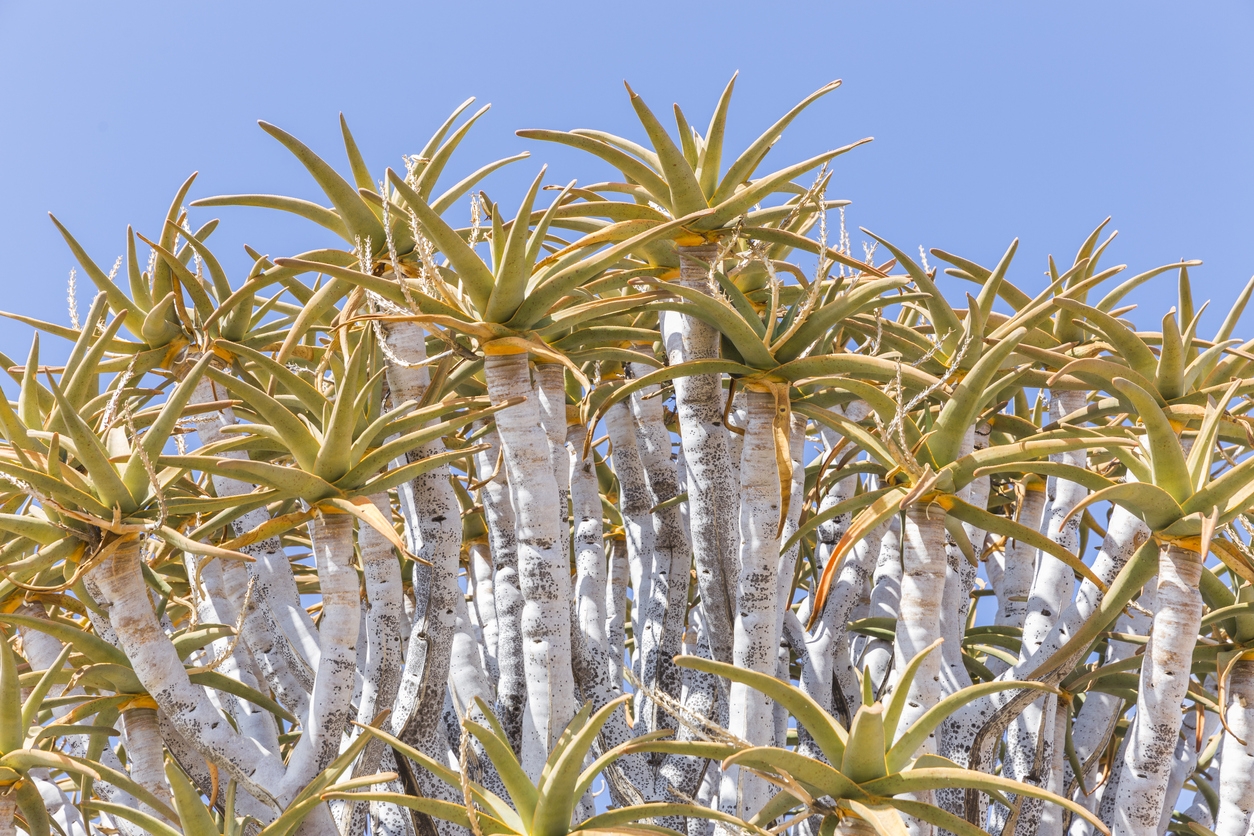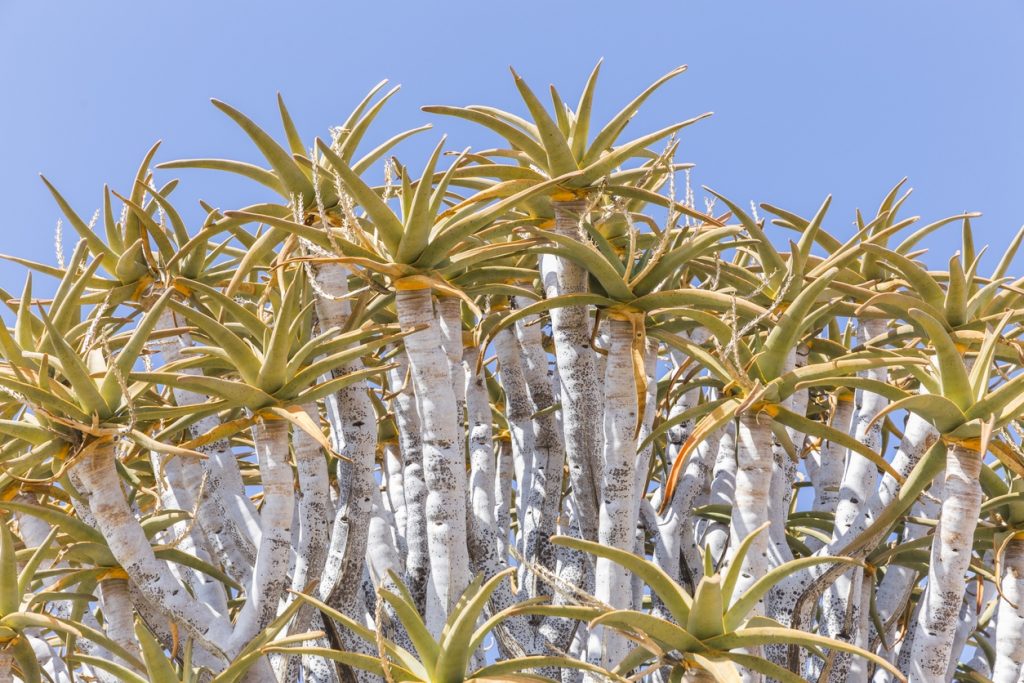Tree Aloe Care – How To Grow Aloe Barberae And Harvest Aloe Gel
Tree aloe is an actual tree that grows in South Africa and Mozambique. With its beautiful flowers and lush foliage, it’s the right tree to add a dramatic tropical touch to your garden. Its slow growth rate means you won’t have to do heavy maintenance work and care on the tree. But it also means that the tree will take years to finally reach its full size and height.

So if you have enough space to accommodate this giant aloe with its 3 feet trunk diameter and you have enough patience, then that’s all you need to grow the tree aloe. Who knows, it might be the spark you need to ignite your love for other varieties of the aloe world.
All about Tree Aloe
Tree aloe (Aloidendron barberae) is a member of the genus Aloidendron which combines a wide variety of succulent plants. While the tree grows well in the tropics and subtropics, it’s native to only Mozambique and South Africa. Still, if you live in zones 9 to 11, you can grow this tree successfully without problems.
It grows on a thick trunk and reaches about 60 feet at maturity. But just like other aloe species, the tree takes years to reach that height. The sparse canopy of the tree is at the very top of the highest branches. The word canopy is used loosely here since the leaves of the tree are nothing more than rosettes at the end of the branch. They have the same texture, color, and shape as those of the aloe vera. So you can harvest aloe gel out of these rosettes as we’ll see later.
In the Northern Hemisphere, the tree aloe will flower in the winter. The flowers grow out of twisted stems at the top of the branches and have pink petals.
Tree Aloe Varieties
Although the tree aloe has many cultivars, they more or less share the same qualities as the original species. They are tall, have rosettes at the top, and thick trunks. Some of these hybrids have dramatic names such as Hercules which has a golden gray trunk and gray leaves, Rex with gray-green leaves with pink teeth, Goliath a top-heavy tree with massive rubbery leaves, and Nick Deinhart which has bluish foliage. But if you’d like to consider other aloe varieties which come in more compact sizes, here are a few options for you.
- Tiger Tooth Aloe (Aloe juvenna): A native of East Africa, it is suited to zones 9 to 11. The diminutive plant grows to 11 inches high and the bright green leaves have sharp teeth on both edges. But they’re too soft to cause any harm and injuries.
- Red Aloe (Aloe cameronii): Also a native of Africa, it grows to about 2 feet high and has fabulous red-copper leaves that give it a distinct appeal. Hardy to drought, you need to allow the soil to go dry for the plant to change color from vibrant green to fiery red.
- Spiral Aloe (Aloe polyphylla): When looking for a unique aloe with a recognizable shape, nothing beats the spiral aloe. You can stare at its spiral rosette for hours on end. The mature plant grows to about one foot tall and two feet in diameter. It grows well in zones 8 to 12 and is good for rock gardens and as a potted plant.
- Sand Aloe (Aloe hereroensis): Unlike other aloes, the sand aloe changes its color periodically according to the environment. When it’s dry, the plant will turn pink, once irrigated, it turns back to green or yellowish-green. The long leaves have sharp spikes so you need to handle them with caution. It can grow to two feet at most.
- Soap Aloe (Aloe maculata): The rubbery leaves and waxy texture of the plant give it this name. That and the fact that in its native habitat in South Africa its gel was used as soap. The edges of the leaves are lined with very sharp spikes that make it a challenge to care for these aloes. The plant has a very slow growth rate and it would take it years to regrow back a cut leaf. The mature plant reaches two feet high and grows well in zones 8 to 11.
How to Grow Tree Aloe
Since the tree aloe is a rare plant, the only possible way for you to start it in your garden is to buy a sapling or a young tree from a nursery. It might surprise you to know that the small tree is a few years old already. Another way to start the tree in your garden is by division or through a cutting. Here’s how to go through this in simple steps.
- Pick a healthy stem growing on a mature tree aloe.
- Use a sharp and sterile blade to cut the stem where it meets the branch.
- Leave the cutting in a dark and warm room overnight for the cut to heal and develop a crust.
- Fill a small pot with a special potting mix that you prepare yourself. Add peat moss to the soil at a ratio of 1:2. This improves drainage but gives the soil a good water retention quality.
- Dip the cut end of the stem in root hormone powder then shake it to get rid of the excess powder.
- Dig a hole in the soil about 2 inches deep and place the cutting in it.
- Backfill with soil and pack it around the stem to keep it standing upright.
- Water the soil thoroughly to help it settle. Allow the soil to dry out between waterings.
- Keep the pot in a sunny spot that gets 6 to 8 hours of the full sun until roots develop.
- Transplant the sapling to its permanent place in the garden where it will get the full sun.
Tree Aloe Care
The challenging part about caring for the tree aloe is the amount of time it takes the tree to grow and mature. And since this is a proper tree with a trunk and a canopy, it will take slow baby steps every year as it inches toward maturity. So for the most time, you’ll be watering and feeding the tree with little to no pruning until it has branched out.
Soil
As we mentioned you’ll need to prepare a special potting mix to start your tree aloe cutting. A commercial cactus potting mix will not do since it has low water retention. To prepare that special potting mix, add peat moss to regular soil. This applies to both potted and outdoor plants. Make sure the soil is well-drained and loamy. The soil pH should be either neutral or slightly acidic. If you get a reading between 6.0 to 7.0, then you won’t have to do anything to amend the soil. As long as the soil has good drainage, the tree will grow well with no issues.
Light
The light conditions are perhaps more important than the soil as far as the tree aloe is concerned. The tree thrives under the full sun and light deprivation will have drastic effects on the growth and health of the aloe. For starters, if the tree gets less than 6 hours of direct sunlight a day, it might stop growing altogether. The leaves will turn brown in poor light conditions and might drop.
In the same vein, the tree needs a temperature between 70 to 80 degrees F throughout the growing seasons. If the temperatures drop to freezing levels in the winter, then you should grow the aloe in a container and bring it inside during those cold months.
Water
Watering the tree aloe is straightforward. When planting the sapling, you need to water it moderately. Allow the soil to dry out between waterings. Once the tree establishes, it becomes more independent as its roots seek the moisture in the deep layers of the soil. When watering the tree, do so in the early morning and aim the water toward the roots of the tree. For a young tree, water it once every couple of weeks during the spring and summer. If the top 3 to 4 inches of the soil dry out quickly, then you can water it once every 10 days. Cut back watering to once a month during the fall and nothing at all when it goes dormant in the winter.
Pests and Diseases
Tree aloe has little to offer the average garden-variety pests that plague other plants. Neither the trunk nor the leathery leaves are an easy target for insects. Yet aphids and scale will invade the tree simply because it’s a live plant. Wash them off the tree with a garden hose and clean the area around the tree from debris and weeds.
As for diseases, most of the health issues the tree faces are induced by inadequate conditions in the environment rather than viral or bacterial infections. Lack of light, for example, causes the leaves to drop and would stunt the growth of the aloe. Remove anything that casts a shadow on the tree or prevents it from getting its 8 hours of sunbath every day.
The leaves might also turn yellow or wither and fall as a result of nutrition-deficient soil. No matter how rich the soil in your garden, the robust roots of the tree will deplete it. So feed the aloe with a nitrogen-high fertilizer at the start of the growing season.
Toxicity
The gel and juices of the tree aloe are toxic to many animals. So when harvesting the gel of the aloe, keep your pets away since they might ingest the leaves or lick them. Don’t eat the gel yourself since it can leave you feeling nauseated. Symptoms of aloe poisoning in cats and dogs include vomiting, drooling, poor appetite, and diarrhea. You should seek medical help immediately in cases of aloe poisoning.
Harvesting Aloe Gel
Many people use aloe gel to treat burns and itches or as a natural hair moisturizer. To start harvesting gel out of your tree aloe, you wait for the tree to have matured and started to develop a full-blown canopy. If the tree is young and only has about 4 leaves in total at the top of the trunk, don’t cut them. That could stunt the growth of the slow-growing tree.
Cut one leaf at a time off the mature tree using a sharp and sterile blade. Open the leaf using the same blade by making an incision in the middle. Press against the leaf to squeeze the gel out and apply it to the burn. Another way to use the leaf is to cut it in half and apply it to the burn or itchy part.

